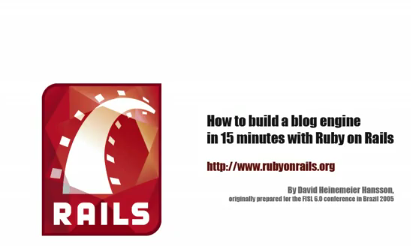On October 1st of this year, Facebook will be requiring that all apps on Facebook must support HTTPS (SSL).
I’ve provided a guide below which I’ve used for apps I’ve worked on that are Rails based.
This guide shows you how to change your Rails Facebook App into an app that supports SSL using Passenger and Apache2.
Step 1: Get an SSL cert or roll your own.
Dreamhost.com made it very easy to add an SSL cert for just $15.00 / year.
I tried out my app out using a locally signed certificate which seemed to work just fine:
openssl genrsa -des3 -out server.key 2048
openssl req -new -key server.key -out server.csr
cp server.key server.key.org
openssl rsa -in server.key.org -out server.key
openssl x509 -req -days 365 -in server.csr -signkey server.key -out server.crt
Step 2: Install and compile Apache 2
Get the latest version of Apache: http://httpd.apache.org/download.cgi.
Configure and compile Apache:
./configure –prefix=/usr/local/apache2 –enable-rewrite –enable-so –enable-ssl
make && make install
Step 3: Configure your Rails app
gem install passenger
passenger-install-apache2-module
Step 4: Edit your Apache 2 config files:
Edit httpd.conf. For example:
LoadModule fcgid_module modules/mod_fcgid.so
LoadModule passenger_module /Users/jimbarcelona/.rvm/gems/ruby-1.9.2-p290/gems/passenger-3.0.8/ext/apache2/mod_passenger.so
PassengerRoot /Users/jimbarcelona/.rvm/gems/ruby-1.9.2-p290/gems/passenger-3.0.8
PassengerRuby /Users/jimbarcelona/.rvm/wrappers/ruby-1.9.2-p290/ruby
Options Indexes FollowSymLinks
AllowOverride All
Order allow,deny
Allow from all
Include conf/extra/httpd-vhosts.conf
Include conf/extra/httpd-ssl.conf
IPCCommTimeout 40
IPCConnectTimeout 10
# TODO: change this to production if you are on production
DefaultInitEnv RAILS_ENV development
SocketPath /tmp/fcgidsock
Edit extra/httpd-vhosts.conf:
ServerName berkeley.l33tcave.com
ServerAdmin wwwadmin@berkeley.l33tcave.com
DocumentRoot /Users/jimbarcelona/rails_apps/github/hipsterhookups.com/public
ErrorLog /usr/local/apache2/logs/rails_error_log
RewriteEngine On
AllowOverride All
Options -MultiViews
RailsEnv development
Edit extra/httpd-ssl.conf:
# General setup for the virtual host
DocumentRoot "/Users/jimbarcelona/rails_apps/github/hipsterhookups.com/public"
ServerName berkeley.l33tcave.com:443
ServerAdmin you@example.com
ErrorLog "/usr/local/apache2/logs/error_log"
TransferLog "/usr/local/apache2/logs/access_log"
# needed for rails
Options Indexes ExecCGI FollowSymLinks
RewriteEngine On
RailsEnv development
AddHandler fcgid-script .fcgi
AllowOverride All
Options -MultiViews
Be sure to add your SSL certs in the httpd-ssl.conf too!
Step 5: Start Apache
# check syntax
apachectl configtest
# start apache
apachectl start
Step 6: Go to facebook and use https for canvas URLs



